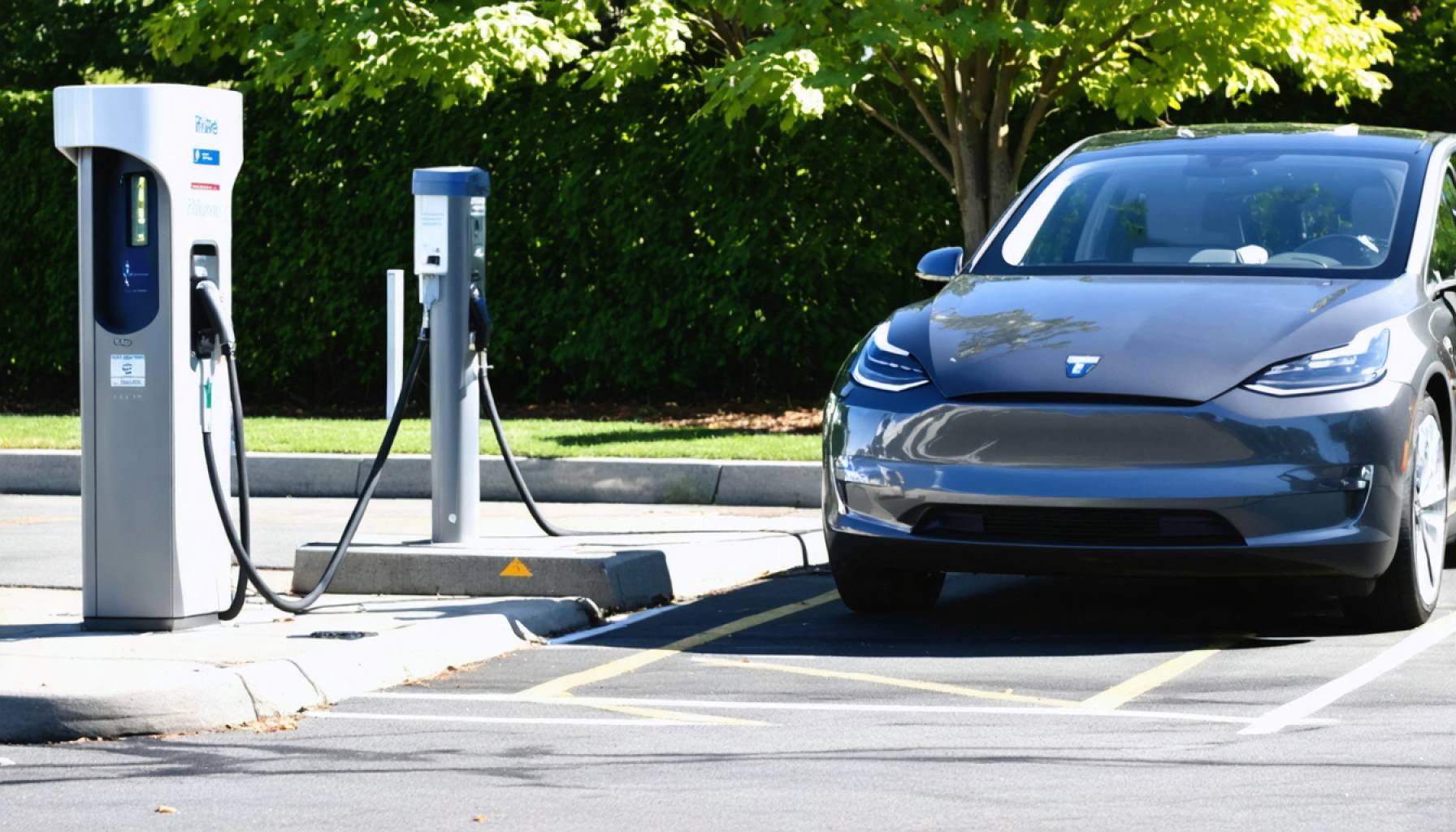- The General Services Administration (GSA) plans to discontinue electric vehicle (EV) charging stations, affecting both private and government EVs.
- This move signifies a shift from President Biden’s goal to electrify federal fleets, supported previously by initiatives like the Inflation Reduction Act.
- The decision marks a pivot towards the Trump administration’s focus on traditional transportation methods, influenced by The Heritage Foundation’s Project 2025.
- The government plans to divest its EV fleet, hinting at potential sales or storage of electric vehicles.
- There is an ongoing debate over America’s energy future, highlighting a conflict between progress in green technology and maintaining traditional energy policies.
- This policy change signifies a larger ideological battle over the country’s ecological direction and automotive future.
A quiet upheaval is rippling through the corridors of federal power, sending shivers down charging cables and igniting debates about America’s energy future. The General Services Administration (GSA), the solemn steward of government assets, is preparing to pull the plug on electric vehicle (EV) charging stations. These once-bustling hubs of green energy will soon fall silent, impacting both privately-owned electric cars of government employees and the government’s own EV fleet.
This move is not just a logistical shift but a symbolic rollback of President Biden’s ambitious plans. His directive to electrify federal fleets sparked a wave of EV adoptions, charging stations dotting the landscape like oases of sustainability. Through strategies encapsulated by the Inflation Reduction Act, the current administration attempted to supercharge this transition. Now, whispers of disconnect echo down Washington’s marbled halls.
The imminent shutdown correlates with the government’s decision to divest from electric vehicles acquired under the previous regime. While details remain under wraps, insiders hint at an interment of these forward-looking fleets, destined either for sale or storage.
This strategic retreat aligns with the Trump administration’s more traditional transportation blueprint, echoing the policy edicts of Project 2025, an agenda penned by The Heritage Foundation. Revisionists within are keen to reverse Biden’s green initiatives, threatening to yank federal incentives designed to accelerate EV adoption.
In these crossroads of policy, a simple truth emerges: the tug-of-war over America’s automotive future isn’t merely a skirmish over technology—it’s a battle for the nation’s ecological soul. The stage may be set for a classic showdown: progress versus preservation, each accelerating towards a horizon of profoundly different tomorrows.
The Shocking Truth Behind the Shutdown of Federal EV Charging Stations
Features, Specs, & Pricing
The electric vehicle (EV) charging stations in question, installed as part of the federal government’s sustainability initiatives, were strategically placed to support the shift toward greener transportation. These charging stations typically offered Level 2 charging, providing a balance between speed and cost-efficiency. Installation costs for such stations generally ranged from $2,000 to $5,000 per unit, depending on location and required electrical upgrades.
Real-World Use Cases
Federal employees and their agencies were the primary users of these charging stations, benefiting from their proximity to government offices. The initiative also served as a model for other public and private entities aiming to transition to electric fleets. By pulling the plug on these stations, the federal government not only impacts its own push towards electrification but may dampen the momentum for broader EV adoption in the corporate sector.
Controversies & Limitations
The decision to divest from electric vehicle support has sparked controversy, particularly from environmental advocacy groups and EV industry stakeholders. Critics argue that this move represents a step backward in combating climate change and could impede the federal fleet’s compliance with established emissions targets. Furthermore, it underscores a broader political rift on environmental policies, with potential repercussions for federal sustainability commitments.
Market Forecasts & Industry Trends
The broader market for electric vehicles and charging infrastructure continues to grow, albeit with noticeable fluctuations based on political landscapes. According to a study by BloombergNEF, the global market for electric vehicles is set to reach 57% of all passenger car sales by 2040. The retraction of federal support in the U.S. could slow this growth domestically, although state-level initiatives and private sector advancements may buffer against a significant downturn.
Security & Sustainability
Electric vehicle charging infrastructure plays a critical role in maintaining the security of energy systems. By diversifying energy sources and investing in renewables, governments can reduce dependency on fossil fuels and enhance grid resilience. However, the shutdown of these stations may send mixed signals about the U.S. commitment to sustainable infrastructure, potentially stalling progress in these areas.
Insights & Predictions
As political administrations continue to change, energy policies will likely remain a pivotal battleground. Future federal sustainability initiatives will depend heavily on leadership priorities. Industry experts suggest that given the current global emphasis on combating climate change, it is likely that support for EV infrastructure will eventually be restored at the federal level.
Pros & Cons Overview
Pros:
– Initial installations supported federal sustainability goals.
– Encouraged EV adoption within government and beyond.
– Served as a model for infrastructure rollout.
Cons:
– Shutdown could slow compliance with emissions targets.
– May deter private sector investments in similar infrastructure.
– Undermines federal leadership in clean energy initiatives.
Actionable Recommendations
– Stay Informed: Monitor policy changes that could impact EV infrastructure and incentives.
– Explore Alternatives: Consider investing in personal charging solutions or identifying alternative public charging resources.
– Advocate: Engage with local and federal representatives to communicate the importance of sustainable policies.
As shifts in energy policy continue to unfold, stakeholders must remain adaptable to navigate the evolving landscape of green infrastructure.
For more information about environmental policy and electric vehicle initiatives, visit the official website of the U.S. Environmental Protection Agency.














